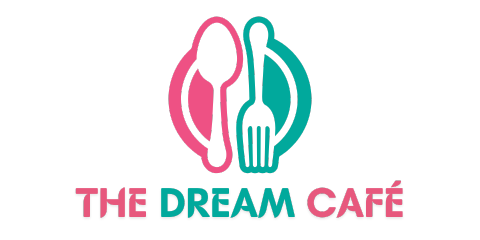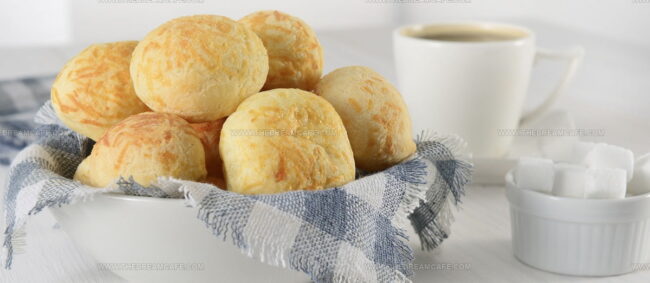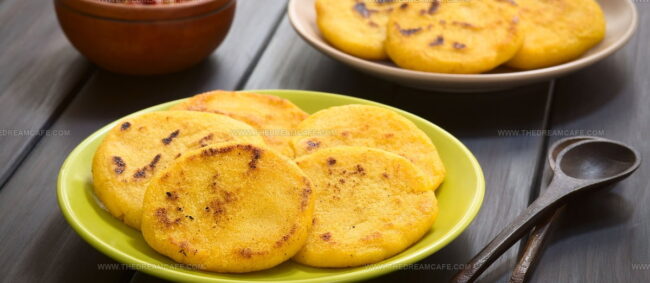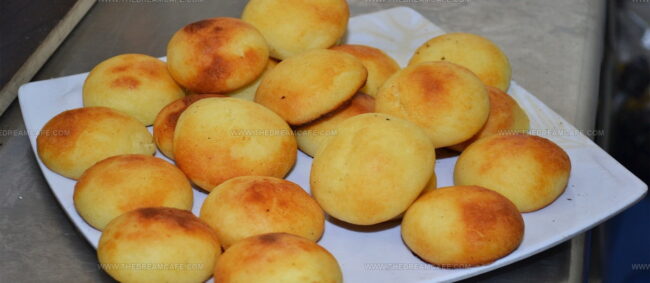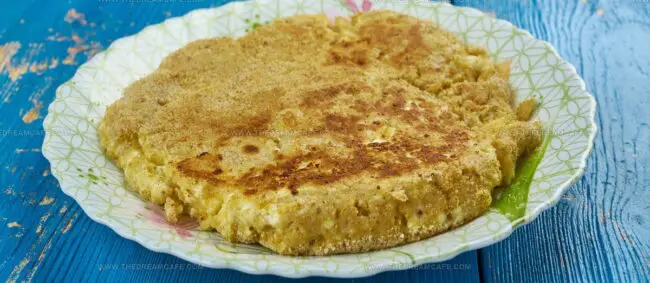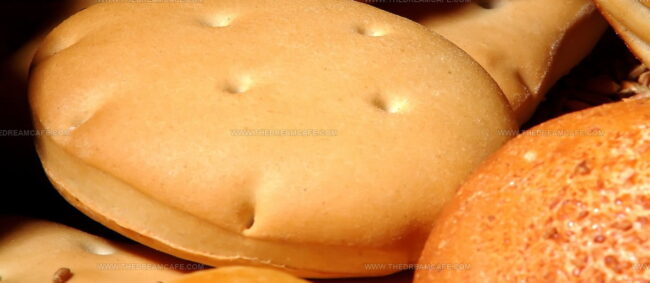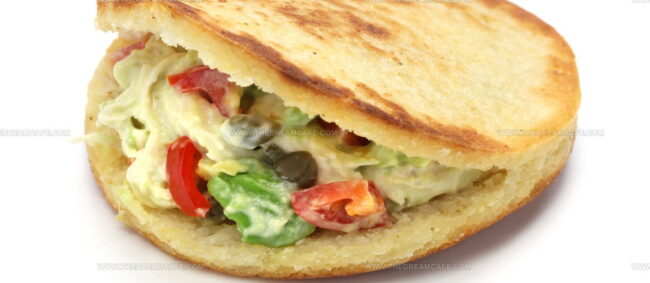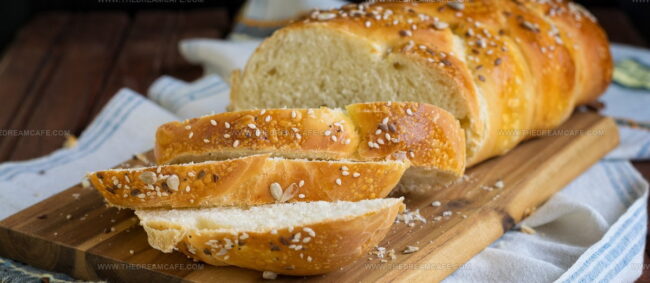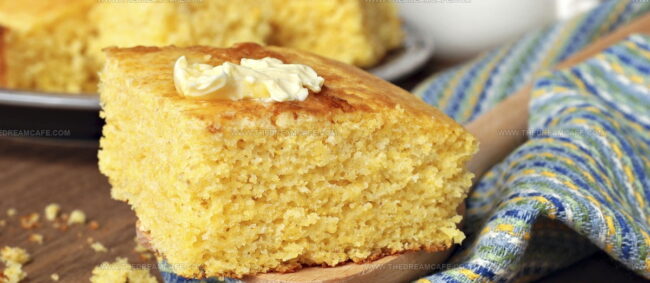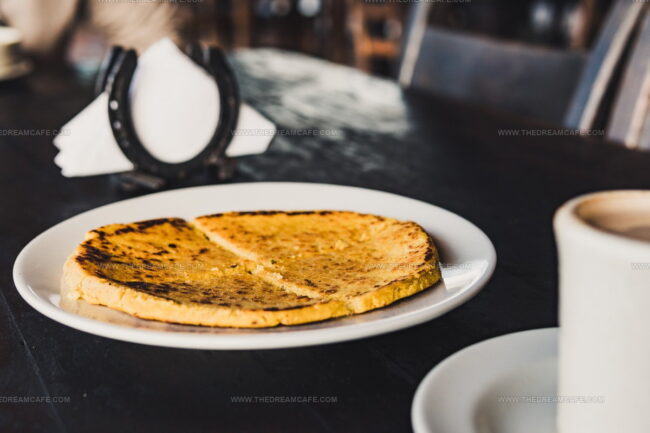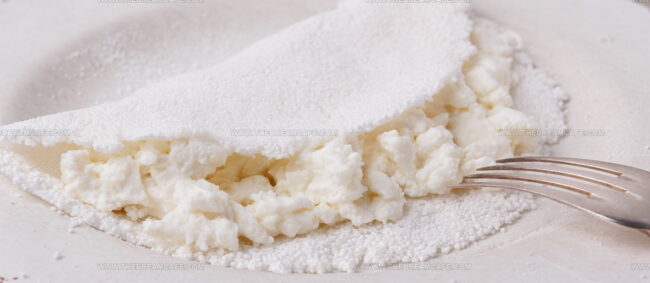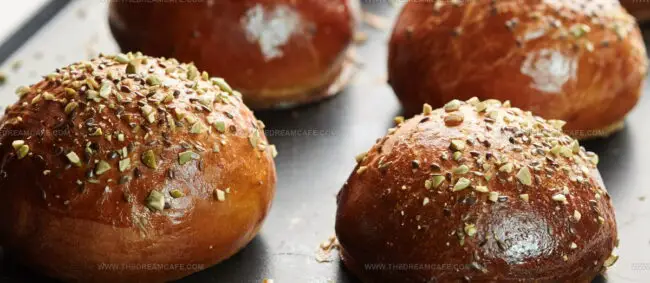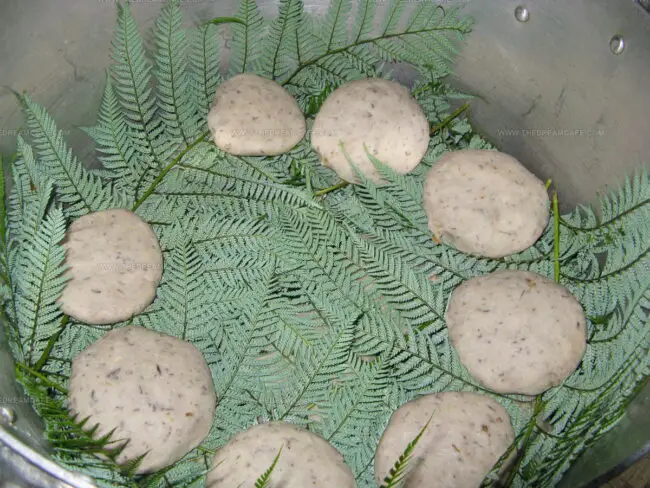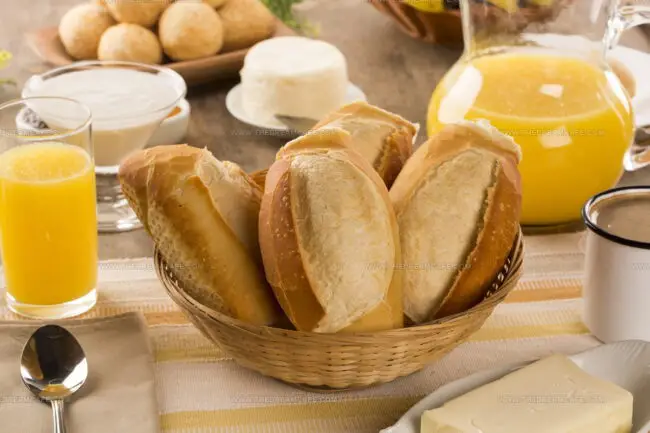28 Tasty South American Breads Everyone Can Make
South American breads represent a vibrant culinary tapestry woven with ancient traditions and local ingredients.
Delectable creations reflect the diverse cultural landscapes across the continent's regions.
Bakers transform simple flour, water, and salt into extraordinary gastronomic experiences that tell compelling stories.
Regional techniques and unique preparation methods transform ordinary ingredients into extraordinary culinary masterpieces.
Each bread carries the essence of its homeland, connecting generations through time-honored recipes and techniques.
Communities celebrate their heritage through these carefully crafted, delicious staples that nourish both body and soul.
The rich textures, distinctive flavors, and innovative approaches showcase the remarkable creativity of South American baking traditions.
Read about these 28 great South American breads that will tantalize your taste buds:
Great South American Breads Fresh from the Oven
Bakeries and home ovens in South America offer up crusty, golden loaves. Unique flavors and textures make every slice memorable.
Pan De Bono
Pan de bono are golden Colombian cheese bread spheres originating from Valle del Cauca that combine cassava starch, cornmeal, queso fresco, eggs, and sugar into a uniquely sweet and savory pastry.
Small round balls slightly larger than golf balls emerge crisp outside and soft inside when baked fresh.
Colombian bakeries and street vendors typically serve these warm breads alongside hot chocolate for a perfect morning or afternoon snack.
Regional stories suggest the name comes from an Italian baker's enthusiastic call of "pane del buono" in Cali or from Hacienda El Bono, where bakers first crafted this recipe.
Light sweetness distinguishes pan de bono from similar South American cheese breads like Brazilian pão de queijo.
Simple ingredients create a comforting texture that melts in your mouth.
Generations of Colombian families have enjoyed these traditional treats as a beloved breakfast or teatime staple.
Pao De Queijo
Pao de queijo are iconic Brazilian cheese bread balls bursting with rich historical significance and unique flavor.
Brazilian slaves originally crafted these savory treats using cassava starch residue as a fundamental ingredient.
African culinary innovation transformed simple starch balls into a beloved national snack during the late 19th century.
Minas Gerais, Brazil's dairy region, played a crucial role in developing the modern recipe by introducing cheese and milk to the traditional starch mixture.
Regional bakers perfected the technique of creating soft, chewy bread balls with a crispy exterior and warm, gooey center.
Gluten-free cassava flour ensures these bite-sized breads remain accessible to many dietary preferences.
Brazilians enjoy pao de queijo as a popular breakfast item, snack, or accompaniment to coffee.
Street vendors and bakeries across Brazil continue to prepare these iconic cheese bread balls using traditional methods passed down through generations.
Marraqueta
Marraquetas are iconic Chilean and Bolivian bread rolls distinguishing themselves with a unique split-style shape and crispy exterior.
European immigrants introduced this bread in the late 19th century, creating a national staple consumed multiple times daily.
Two connected dough balls form its signature design, with bakers carefully pressing them together before baking.
Water pans during baking generate the bread's characteristic crunchy crust, which many locals prefer over the soft inner crumb.
Simple ingredients including flour, water, salt, and yeast compose its straightforward recipe.
Most households and bakeries prepare marraquetas fresh each morning, serving them with meals and snacks.
Traditional preparation techniques remain largely unchanged since their introduction.
Almojabana
Almojabanas are traditional Latin American cheese breads originating in Puerto Rico that burst with rich, warm flavor and irresistible texture.
Puerto Rican bakeries craft these small, round breads using cuajada white cheese and cornmeal flour, creating a unique golden-brown exterior with a soft, spongy interior.
Professional bakers carefully bake almojabanas to achieve their signature golden color and light, airy consistency.
These warm breads serve as popular breakfast and snack items across several Latin American countries.
Cornmeal provides a distinctive texture that sets almojabanas apart from similar cheese breads.
Cuajada cheese contributes a mild, creamy flavor that complements the bread's texture.
Warm almojabanas offer an authentic taste of Puerto Rican culinary traditions.
Pan De Queso
Pan de queso are irresistible Brazilian cheese rolls bursting with rich cheesy flavor and a unique light, airy texture.
Brazilian bakeries and home kitchens craft these golden-brown breads using tapioca flour, creating a gluten-free delicacy that melts in your mouth.
Originating in Minas Gerais, these rolls combine grated cheese and fermented cassava starch for maximum volume and softness.
Brazilian families enjoy pan de queso as a breakfast staple or quick snack throughout the day.
Small, round, and incredibly addictive, these rolls pair perfectly with coffee or as a standalone treat.
Street vendors and bakeries sell them fresh and warm, making them a beloved comfort food.
Chipa
Chipa are traditional Paraguayan bread rolls packed with cultural significance and unique ingredients unique to South America's indigenous culinary traditions.
Native Guarani people originally developed these small buns using cassava flour as their primary starch before wheat arrived in the region.
Jesuit missionaries later influenced chipa's recipe by introducing dairy products like milk, eggs, and cheese during colonial times.
Cassava flour forms chipa's core ingredient, blended with lard and anise for distinctive flavor and texture.
Bakers traditionally prepare chipa by hand, often shaping them into small rings or round shapes.
Rural communities continue making chipa using generations-old techniques passed down through families.
Street vendors and local bakeries sell these aromatic bread rolls as popular snacks throughout Paraguay.
Arepa
Arepas are golden cornbread disks beloved across Venezuela, Colombia, and neighboring Caribbean countries as a daily staple that transforms simple ground corn dough into crispy, versatile meals.
Venezuelan households serve these portable breads at any meal, stuffing them with endless combinations like shredded beef, black beans, cheese, and avocado.
Corn flour creates the signature crisp exterior through careful grilling or frying that yields a soft, warm interior.
Street vendors and home cooks prepare arepas using generations-old techniques passed through families.
Grilling produces a satisfying crunch that contrasts with creamy, rich inner fillings.
Traditional breakfast pairings include strong coffee and hot chocolate.
Venezuelan culture celebrates these cornbread rounds as a fundamental comfort food connecting communities and generations.
Cassava Bread (Pan De Yuca)
Pan de yuca are warm, cheesy bread balls originating from Colombia and Ecuador that burst with rich flavor from cassava flour, eggs, and melted cheese.
Bakers craft these small, round appetizers as popular street snacks and comfort food throughout Latin America.
Small bakeries and home kitchens frequently prepare these treats as quick afternoon snacks.
Traditional recipes call for simple mixing of cassava flour with fresh eggs and soft cheese.
Warm pan de yuca pairs perfectly with hot chocolate, tea, or coffee.
Street vendors and local bakeries often sell these savory bites fresh from the oven.
Colombian and Ecuadorian families consider these bread balls a beloved cultural staple.
Mbeju
Mbeju is a golden-brown Paraguayan flatbread that transforms simple ingredients into a rich, crumbly delicacy.
Paraguay's indigenous Guaraní people pioneered this hearty bread using manioc or farina flour as its base ingredient.
Salt, water, and oil blend together to create its signature texture, with optional crumbled cheese adding extra flavor.
Paraguayans traditionally enjoy mbeju as a breakfast staple or quick evening meal.
Native communities developed this versatile flatbread centuries ago as a nutritious and filling food source.
Small households and rural families frequently prepare mbeju using minimal kitchen tools.
Regional ingredients sometimes include additional components like eggs or native spices to enhance its taste profile.
Arepa De Choclo
Cachapas are traditional Latin American corn pancakes bursting with sweet-savory flavor and cultural significance across Venezuela, Colombia, and Nicaragua.
Street vendors and home cooks craft these golden discs using fresh corn kernels ground into a smooth batter with simple ingredients like sugar, milk, and salt.
Griddle-cooking transforms the mixture into a soft, slightly crispy pancake with rich corn essence and caramelized edges.
Venezuelan versions often feature queso de mano, a soft white cheese that melts beautifully between corn layers.
Corn quality determines the dish's ultimate taste and texture, with fresh, sweet kernels creating the most authentic experience.
These versatile corn pancakes serve as both a breakfast staple and popular street food.
Travelers and locals alike enjoy cachapas as a delicious representation of Latin American culinary traditions.
Pan Amasado
Pan amasado are traditional Chilean flatbreads crafted through hand-kneading techniques that transform simple wheat flour, water, and salt into soft, warm rounds of comfort.
Chilean families have long treasured these rustic breads as essential meal companions, especially in rural regions where wood-fired clay ovens create their signature golden-brown crusts.
Rural households often prepare pan amasado during morning hours, filling kitchens with irresistible fresh-baked aromas.
Workers and farmers rely on these affordable bread rounds as quick, satisfying nutrition throughout their demanding days.
Salt and wheat flour form pan amasado's basic ingredients, with skilled bakers using minimal components to create maximum flavor.
Wood-fired ovens impart a distinctive smoky essence to these breads, distinguishing them from commercial bakery products.
Home bakers typically shape pan amasado by hand, ensuring each loaf carries a personal touch.
These small, round breads represent more than food - they embody Chilean culinary traditions passed through generations.
Arepa Andina
Arepas Andinas represent a distinctive wheat flour-based Venezuelan flatbread originating from mountain regions near Colombia's border.
Merida state farmers traditionally cultivate wheat, transforming grains into these unique circular breads.
Mountain communities develop this version as an alternative to standard corn flour arepas.
Regional wheat cultivation enables bakers to create softer, more elastic bread with distinct texture and flavor.
Wheat flour provides a smoother consistency compared to traditional corn-based versions.
Venezuelan families prepare these arepas as versatile meal options during breakfast and dinner.
Mountain residents often stuff them with meats, cheeses, or eggs for complete nutrition.
Regional culinary traditions preserve this wheat-based bread as an important staple in Andean cuisine.
Colombian Braided Bread (Pan Trenza Colombiano)
Pan trenza stands as a beloved Salvadoran braided bread cherished for its golden, soft texture and rich flavor profile.
Crafted from simple ingredients like flour, sugar, salt, yeast, oil, and eggs, this bread often incorporates sweet additions such as guava, raisins, or cheese to enhance its taste.
Bakers carefully weave the dough into an intricate braid, creating a visually appealing and delicious pastry.
Families traditionally prepare pan trenza for special occasions and gatherings, sharing its warm, comforting presence.
Each loaf represents a careful balance of texture and taste, with a slightly sweet undertone that makes it irresistible.
Salt and sugar work together to create a perfectly balanced flavor.
Salvadoran households consider this bread a staple of their culinary heritage.
Pan De Huevo
Pan de huego stands out as a beloved Chilean street food with a rich coastal heritage, featuring a soft, golden-brown egg bread roll cherished by beach vendors and tourists.
Women in crisp white uniforms traditionally sell these treats along sandy shorelines, creating a nostalgic culinary experience.
Bakers craft the rolls using simple ingredients like flour, baking powder, sugar, eggs, vanilla, and butter.
Each bread roll boasts a slightly sweet flavor and tender texture that melts in your mouth.
Beach visitors eagerly purchase these snacks as quick, satisfying treats during sunny afternoons.
Chile's coastal communities have embraced pan de huego as a signature street food for generations.
Tourists and locals alike savor these freshly baked rolls as perfect beach companions.
Generations of Chilean families have enjoyed this simple yet delicious bread roll as a cherished seaside tradition.
Sopa Paraguaya
Sopa paraguaya represents a cornbread-style dish mistakenly named as soup in Paraguay.
Spanish-speaking regions cherish this traditional specialty originating from unexpected kitchen circumstances during President Carlos Antonio Lopez's era.
Paraguayan kitchens prepare this unique bread using corn flour, cheese, and onions as primary ingredients.
Regional cooks developed the recipe after a presidential chef accidentally thickened a planned soup with excessive corn flour.
Corn-based ingredients create a dense, savory bread with rich flavor profiles.
Historical accounts suggest the dish emerged from a cooking mistake that surprisingly delighted the president.
Paraguayan families continue preparing sopa paraguaya as a beloved national comfort food.
Cheese and onion components provide distinctive taste and texture to this beloved national bread.
Arepa Paisa
Arepa paisa represents a golden, crispy corn cake from Colombia's Paisa region, crafted from soaked threshed corn and grilled to perfection.
Regional cooks shape the corn masa into flat circles that transform into crunchy rounds with rich golden edges.
Colombians enjoy these versatile corn cakes as standalone snacks or complementary side dishes with multiple filling options.
Cheese, eggs, and meats frequently stuff these hearty corn rounds for extra flavor and nutrition.
Traditional preparation involves carefully soaking corn kernels before grinding them into a smooth dough.
Skilled makers grill each arepa until its exterior becomes crisp and its interior remains soft and warm.
Colombia's western mountain communities consider this corn cake a staple meal companion.
Families share these simple yet satisfying corn discs during breakfast, lunch, and dinner gatherings.
Arepa Santandereana
Arepa Santandereana represents a mouthwatering Colombian corn cake packed with robust flavors from northeastern Colombia's Santander region.
Yellow corn masa forms the base of this rustic street food, blended with cassava and crispy chicharron (pork belly) for an irresistible texture and taste.
Grilling transforms the arepa into a golden, crunchy delicacy that locals savor immediately after cooking.
Traditional preparation involves mixing ground corn with cassava flour and integrating small pieces of crispy pork.
Santander's culinary landscape celebrates this hearty snack as a staple street food enjoyed throughout the region.
Regional cooks take pride in crafting each arepa with precision and care.
Families often gather to prepare these flavorful corn cakes during social gatherings.
Regional ingredients and cooking techniques make Arepa Santandereana a unique gastronomic experience reflecting Colombia's rich food culture.
Tortilla De Rescoldo
Tortilla de rescoldo are smoky, ash-infused Chilean flatbreads traditionally baked directly in fireplace embers after flames subside.
Chilean central-northern regions developed this rustic bread using simple ingredients like flour, butter, and salt.
Rural families craft the unleavened disks by hand, carefully positioning them among warm ashes for unique flavor development.
Baking methods transform ordinary ingredients into a distinctive bread with intense smokiness and earthy undertones.
Laraquete cooks incorporate chuchitas into their version, while Altihue bakers enhance the bread with small pork fragments.
Generations have preserved this ancestral bread-making technique, passing down skills through family traditions.
Wood fire and ash create a complex taste profile impossible to replicate through modern baking methods.
Faina
Faina represents a savory chickpea flour flatbread originating from South American immigrant communities with deep Genovese roots.
Argentine and Uruguayan street food culture embraced this simple yet flavorful bread as a quick street snack decades ago.
Italian immigrants introduced the recipe during early 20th-century migrations to Buenos Aires and Montevideo.
Black pepper and fresh herbs enhance its distinctive taste and texture.
Chickpea flour provides the base ingredient, creating a dense and crispy consistency.
Mediterranean culinary traditions heavily influenced its preparation and popularity.
Street vendors frequently serve faina as a quick and affordable meal option.
Its popularity remains strong across Argentina and Uruguay today.
Pan Alinado Colombiano
Pan alinado stands as Colombia's cherished cheese-infused bread, distinguished by its crispy golden exterior and soft, buttery interior bursting with crumbled queso fresco.
Local bakers craft this traditional bread using a carefully balanced mixture of flour, yeast, butter, sugar, salt, and powdered milk.
Skilled hands knead the ingredients into a smooth, elastic dough that transforms during baking into a golden-brown delight.
Colombian bakeries serve pan alinado as a popular breakfast and snack option throughout the country.
Street vendors and small shops prominently display these fragrant breads, attracting locals and visitors.
Queso fresco adds a distinctive tangy flavor and creamy texture to the bread's inner layers.
Pan alinado represents a simple yet beloved part of Colombian culinary heritage, connecting generations through its comforting taste and aroma.
Casabe
Casabe is a crispy, ultra-thin flatbread originating from South America's northern regions, crafted from cassava flour without any leavening agents or fats.
Indigenous communities perfected this nutritious bread centuries ago, creating a lightweight, versatile staple with exceptional health benefits.
Cassava's natural properties give casabe a unique crunch and neutral flavor that complements numerous dishes.
Rich in fiber and minerals, this traditional bread pairs perfectly with stews, soups, and various dips.
South Americans often use casabe as a base for fillings or break it into smaller pieces for snacking.
Its simplicity allows for creative sweet and savory adaptations.
Nutritionists increasingly recognize casabe as a gluten-free alternative to wheat-based breads.
Modern culinary experts are exploring casabe's potential in global cuisine, introducing this ancient food to international markets.
Tortilla Santiaguena
Tortilla santiaguena are golden-brown wheat flatbreads deeply rooted in Argentine culinary traditions, originating from Santiago del Estero province.
Crafted with simple ingredients like wheat flour, melted cow fat, and coarse salt, these rustic breads showcase northern Argentina's rural cooking style.
Street vendors across Santiago del Estero sell these crispy, slightly greasy tortillas as quick, satisfying snacks.
Locals prepare the dough by mixing ingredients and carefully baking it on a traditional parrilla grill until achieving a perfect golden color.
Regional cooks take pride in creating these thin, crackling breads that pair wonderfully with mate or local stews.
Wheat flour and animal fat create a rich, authentic flavor unique to this provincial specialty.
Travelers and locals alike enjoy these tortillas as a quick, authentic taste of Argentine countryside cuisine.
Bollo
Bollo are hearty Colombian corn buns originating from coastal regions with deep cultural significance.
Street vendors and local markets across Colombia sell these traditional breakfast staples wrapped in corn leaves.
Colombian families prepare bollo using ground corn, yuca, or potatoes as primary ingredients.
Panamanian and Spanish cuisines also embrace similar bread styles.
Bollo frequently accompanies cheese and provides substantial morning nutrition.
Corn-based varieties remain most popular among traditional recipes.
Generations have enjoyed these simple yet satisfying bread buns as a fundamental part of their daily diet.
Mogolla
Mogolla represents a cherished Colombian bread crafted from wheat, whole wheat, or cornmeal flour with a distinctive small round shape and subtle sweetness.
Colombian bakers create this compact bread in multiple variations, featuring unique textures and fillings that reflect regional preferences.
Chicharrona mogolla stands out as a favorite version, where crispy pork belly pieces are nestled inside the soft bread's interior.
Bakers carefully mix ingredients to achieve a light, slightly dense texture that complements various meals and snacks.
Street vendors and bakeries across Colombia sell these small breads as quick breakfast or afternoon treats.
Regional differences influence mogolla's preparation, with some versions incorporating local spices or additional ingredients.
Rural communities often prepare mogolla using traditional family recipes passed through generations.
Bread lovers appreciate mogolla's versatility and comforting taste that connects Colombian culinary traditions.
Chapalele
Chapalele is a rustic potato bread from Chile's Chiloé Island that transforms simple ingredients into a comforting culinary experience.
Peasant families historically crafted this bread using potatoes and wheat flour as a staple food source.
Steamed in traditional underground ovens called curanto, chapalele showcases indigenous cooking techniques passed through generations.
Native islanders prepare the dough by mashing potatoes and mixing them with flour until a soft, pliable consistency forms.
Bakers shape the mixture into small, plump dumplings before carefully steaming them in earth-covered pits.
Rich potato flavors and dense texture distinguish chapalele from other regional breads.
Chilean communities continue preparing this dish during festivals and family gatherings.
Mogolla Chicharrona
Mogolla chicharrona bursts with rich Colombian street food heritage, featuring a soft wheat bread generously stuffed with crispy, savory pork belly pieces.
Bakers in Cundinamarca carefully craft these small rolls by embedding crunchy chicharron fragments throughout the dough.
Regional bakeries specialize in creating these flavorful breads that combine rustic wheat textures with intense pork cracklings.
Colombians often enjoy mogolla chicharrona as a quick breakfast or hearty snack, appreciating its compact size and intense flavor profile.
Street vendors and local bakeries pride themselves on perfecting this traditional recipe passed down through generations.
Wheat flour, pork, salt, and yeast form the core ingredients that transform simple bread into a memorable culinary experience.
Tourists and locals alike seek out these unique rolls as a quintessential taste of Colombian street food culture.
Pan Frances Peruano
Pan frances are traditional Peruvian breakfast rolls with a distinctive center crease that distinguishes them from other bread varieties.
These small, oval-shaped rolls feature a golden-brown exterior crafted from simple ingredients including flour, water, yeast, sugar, and salt.
Despite their French-sounding name, pan frances are uniquely Peruvian and differ significantly from actual French bread.
Street vendors and bakeries across Peru serve these rolls fresh each morning, often accompanied by butter or jam.
Breakfast tables and morning markets frequently showcase these crispy rolls as a staple morning food.
Peruvian families enjoy pan frances with coffee or hot chocolate, making them a central part of morning meal routines.
Bakers typically create these rolls using traditional techniques passed down through generations.
Many Peruvians consider pan frances an essential part of their daily breakfast experience.
Garullas
Garullas are Colombian bread rolls bursting with rustic charm and regional flavor, crafted from a hearty blend of wheat flour, cornmeal, and fresh cheese.
Bakers in Soacha carefully mix butter, sugar, eggs, and cuajada or queso fresco into a distinctive dough that creates a golden-brown exterior when baked.
Street vendors and local bakeries throughout Colombia's Cundinamarca region pride themselves on preparing these traditional bread rolls.
Regional families often enjoy garullas as a quick breakfast or afternoon snack paired with hot coffee or chocolate.
Soft and slightly crumbly, these bread rolls provide a comforting taste of Colombian culinary heritage.
Generations have passed down the simple yet satisfying recipe, maintaining its cultural significance.
Rural communities especially treasure this bread as a staple of their daily diet.
Travelers exploring Colombian cuisine frequently discover garullas as a delightful introduction to the country's rich bread-making traditions.
How Do South American Breads Compare to European or Asian Breads?
South American breads offer a unique blend of textures, flavors, and cultural influences that set them apart from European and Asian varieties:
However, they frequently incorporate local ingredients like cornmeal, cassava flour, or cheese, giving them distinctive flavors and textures. For example, pan de yuca (cheese bread) uses cassava flour and cheese for a chewy, gluten-free bite.
In contrast, Asian breads tend to be softer and sometimes steamed, such as Chinese mantou or Japanese milk bread.
European breads may be central to meals as rustic loaves or artisan creations, while Asian breads often accompany dim sum or are snacks themselves.
